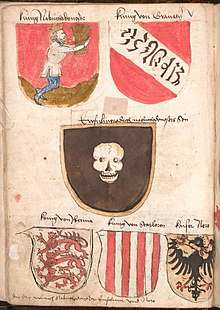Nasrid dynasty
| History of Al-Andalus |
|---|
|
Muslim conquest (711–732) |
|
Umayyads of Córdoba (756–1031) |
|
First Taifa period (1009–1110) |
|
Almoravid rule (1085–1145) |
|
Second Taifa period (1140–1203) |
|
Almohad rule (1147–1238) |
|
Third Taifa period (1232–1287) |
|
Emirate of Granada (1238–1492) |
| Related articles |
| Historical Arab states and dynasties | ||||||||||||||||||||||||||||||||||||||||||||||||||||||||||||
|---|---|---|---|---|---|---|---|---|---|---|---|---|---|---|---|---|---|---|---|---|---|---|---|---|---|---|---|---|---|---|---|---|---|---|---|---|---|---|---|---|---|---|---|---|---|---|---|---|---|---|---|---|---|---|---|---|---|---|---|---|
 | ||||||||||||||||||||||||||||||||||||||||||||||||||||||||||||
|
Ancient Arab States
|
||||||||||||||||||||||||||||||||||||||||||||||||||||||||||||
|
Eastern Dynasties
|
||||||||||||||||||||||||||||||||||||||||||||||||||||||||||||
|
Western Dynasties
|
||||||||||||||||||||||||||||||||||||||||||||||||||||||||||||
|
Arabian Peninsula
|
||||||||||||||||||||||||||||||||||||||||||||||||||||||||||||
|
Current monarchies
|
||||||||||||||||||||||||||||||||||||||||||||||||||||||||||||
The Nasrid dynasty (Arabic: بنو نصر banū Naṣr or banū al-Aḥmar, Spanish: Nazarí) was the last Arab Muslim dynasty in Iberia, ruling the Emirate of Granada from 1230 until 1492.[1] The Nasrid dynasty rose to power after the defeat of the Almohad Caliphate in 1212 at the Battle of Las Navas de Tolosa. Twenty-three emirs ruled Granada from the founding of the dynasty in 1230 by Muhammad I until 2 January 1492, when Muhammad XII surrendered to the Christian Spanish kingdoms of Aragon and Castile. Today, the most visible evidence of the Nasrids is the Alhambra palace complex built under their rule.


Lineage
The Nasrid dynasty was descended from the Arab Banu Khazraj tribe,[2] and claimed direct male-line descent from Sa'd ibn Ubadah, the chief of the tribe and one of the companions of the Islamic prophet Muhammad. The nasab of Yusuf (nicknamed "al-Ahmar", meaning "the Red").[3]
Conflicts of succession and civil war
During the time the Christians were launching a campaign against the Emirate of Granada that would effectively end the Nasrid dynasty, the Nasrids were engaged in a civil war over the throne of Granada. When Abu l-Hasan Ali, Sultan of Granada, was ousted by his son Muhammad XII, Abu l-Hasan Ali retreated to Málaga and civil war broke out between the competing factions. Christians took full advantage of this and continued capturing Muslim strongholds. Muhammed XII was caught by Christian forces in 1483 at Lucena, Córdoba. He was freed after he swore an oath of allegiance to Ferdinand II of Aragon and Isabella I of Castile. Abu l-Hasan Ali finally abdicated in favor of his brother Muhammad XIII, Sultan of Granada, known as Al-Zaghal (the valiant), and a power struggle with Muhammad XII continued. Al-Zaghal prevailed in the inner struggle but was forced to surrender to the Christians. Muhammad XII was given a lordship in the Alpujarras mountains but instead took financial compensation from the Spanish crown to leave the Iberian Peninsula.[4]
Legacy
The Nasrid dynasty was the longest ruling Muslim dynasty in the Iberian Peninsula. Reigning for more than 250 years from the establishment of the Emirate of Granada in 1230, to its annexation by the 'Catholic Monarchs' in 1492. The Nasrids constructed the Alhambra palace in Granada.
Family tree
The family tree below shows the genealogical relationship between each sultan of the Nasrid dynasty.[5] It starts with their common ancestor, Yusuf al-Ahmar. Daughters are omitted, as are sons whose descendants never reigned. During times of rival claims to the throne, the family tree generally recognizes the sultan who controlled the city of Granada itself and the Alhambra palace.
List of Nasrid sultans of Granada
the Iberian Peninsula |
| al-Andalus (taifas) |
| Aragon |
| Asturias |
| Castile |
| Catalonia |
| Galicia |
| Granada |
| León |
| Majorca |
| Navarre |
| Portugal |
| Spain Medieval · Modern |
| Suebi |
| Valencia |
| Viguera |
| Visigoths |
First dynasty (al-dawla al-ghalibiyya):[6]
- Muhammad I ibn Nasr (1238–1272)
- Muhammed II al-Faqih (1273–1302)
- Muhammed III (1302–1309)
- Nasr (1309–1314)
Second dynasty (al-dawla al-isma'iliyya al-nasriyya):[6]
- Ismail I (1314–1325)
- Muhammed IV (1325–1333)
- Yusuf I (1333–1354)
- Muhammed V (1354–1359, 1362–1391)
- Ismail II (1359–1360)
- Muhammed VI (1360–1362)
- Yusuf II (1391–1392)
- Muhammed VII (1392–1408)
- Yusuf III (1408–1417)
- Muhammed VIII (1417–1419, 1427–1429)
- Muhammed IX (1419–1427, 1430–1431, 1432–1445, 1448–1453)
- Yusuf IV (1432)
- Yusuf V (1445–1446, 1462)
- Muhammed X (1446–1448)
- Muhammed XI (1453–1454)
- Sa'ad (1454–1464)
- Abu l-Hasan Ali, known as Muley Hacén (1464–1482, 1483–1485)
- Abu ‘Abd Allah Muhammed XII, known as Boabdil (1482–1483, 1486–1492)
- Abū ‘Abd Allāh Muhammed XIII, known as El Zagal (1485–1486)
See also
Notes
- ↑ Miranda 1970, p. 429.
- ↑ Hitti, Philip K. (2002). History of The Arabs. Palgrave Macmillan. p. 549. ISBN 9781137039828.
- ↑ Fierro, Maribel. Ways of Connecting With the Past: Genealogies in Nasrid Granada. pp. 71–88. doi:10.3366/edinburgh/9780748644971.003.0006.
- ↑ Barton, Simon (2009). A History of Spain. London: Palgrave Macmillan. p. 104. ISBN 978-0-230-20012-8.
- ↑ Lane-Poole, Stanley (1894). The Mohammedan Dynasties: Chronological and Genealogical Tables with Historical Introductions. Westminster: Archibald Constable and Company. p. 29. OCLC 1199708.
- 1 2 Fernández-Puertas 1997, p. 4.
Bibliography
- Fernández Puertas, Antonio (1997). The Alhambra. Vol 1. From the Ninth Century to Yusuf I (1354). Saqi Books. ISBN 0-86356-466-6.
- Fernández Puertas, Antonio. The Alhambra. Vol. 2. (1354 - 1391). Saqi Books. ISBN 0-86356-467-4.
- Harvey, Leonard Patrick (1992). Islamic Spain 1250 to 1500. University of Chicago Press. ISBN 0-226-31962-8.
- Watt, W. Montgomery (1965). A History of Islamic Spain. Edinburgh University Press. ISBN 0-7486-0847-8.
- Arié, Rachel (1990). L’Espagne musulmane au Temps des Nasrides (1232–1492) (in French) (2nd ed.). De Boccard. ISBN 2-7018-0052-8.
- Bueno, Francisco (2004). Los Reyes de la Alhambra. Entre la historia y la leyenda (in Spanish). Miguel Sánchez. ISBN 84-7169-082-9.
- Cortés Peña, Antonio Luis; Vincent, Bernard (1983–1987). Historia de Granada. 4 vols (in Spanish). Editorial Don Quijote.
- Miranda, Ambroxio Huici (1970). "The Iberian Peninsula and Sicily". In Holt, P.M; Lambton, Ann K.S.; Lewis, Bernard. The Cambridge History of Islam. Vol. 2A. Cambridge University Press.
- Fernández-Puertas, Antonio (April 1997). "The Three Great Sultans of al-Dawla al-Ismā'īliyya al-Naṣriyya Who Built the Fourteenth-Century Alhambra: Ismā'īl I, Yūsuf I, Muḥammad V (713-793/1314-1391)". Journal of the Royal Asiatic Society. Third Series. Vol. 7 (No. 1).
